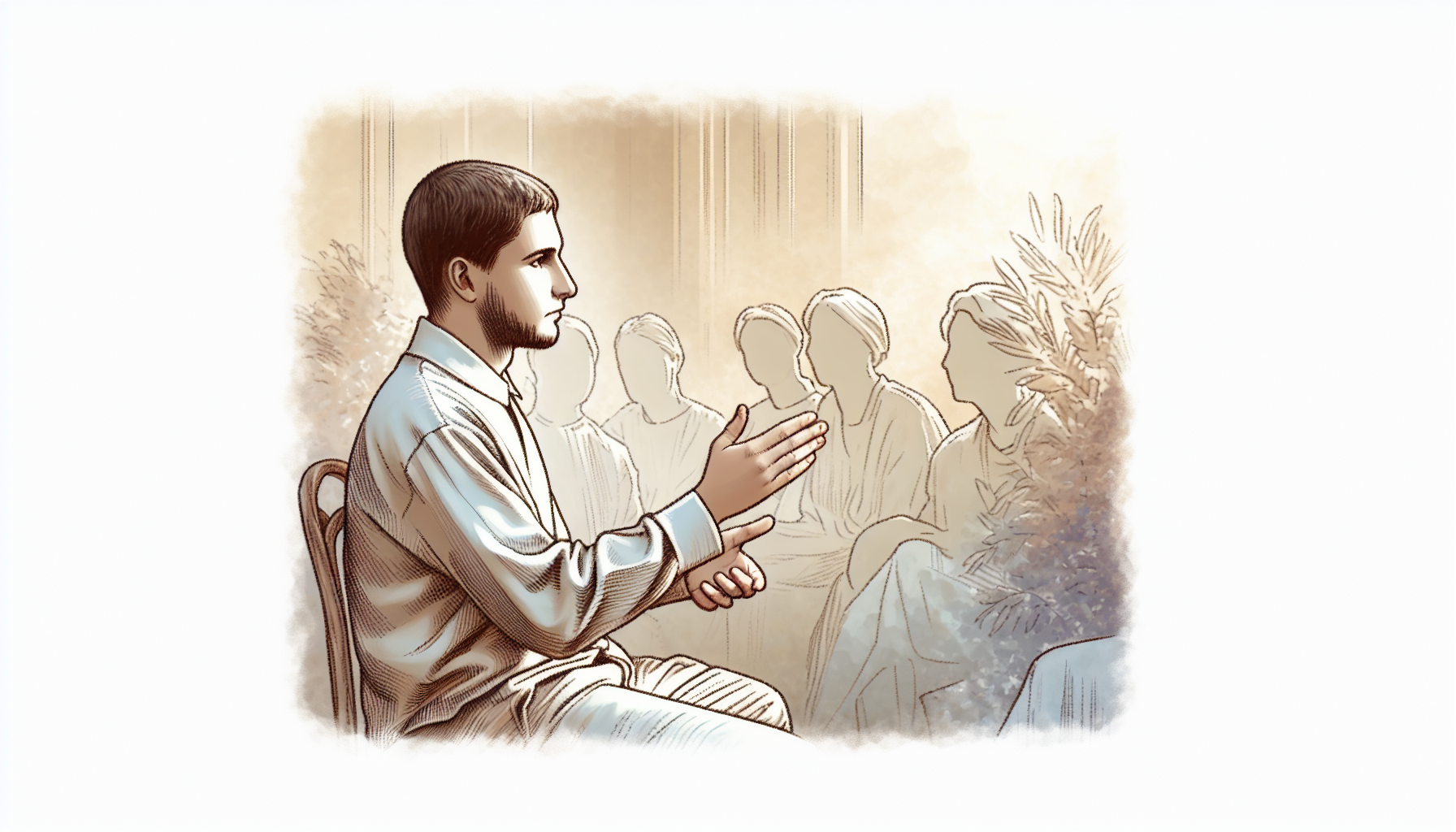When confronted with difficult employees, knowing how to respond and guide them toward improvement is vital for maintaining team health and productivity. This clear-cut guide on “how to deal with difficult employees” provides directly actionable strategies for identifying disruptive behavior, effectively communicating expectations, and fostering personal and professional growth. By the end, you’ll be equipped with the tools needed to transform difficult situations into opportunities for team strengthening—without any confusing jargon.
Key Takeaways from this Blog
- Identify and understand problematic behaviors in employees to effectively address and improve team dynamics and productivity.
- Constructive feedback and setting clear expectations are crucial for managing difficult employees and guiding their behavioral changes.
- Foster a positive company culture and engage in proactive hiring practices to prevent difficult behaviors and ensure a supportive and efficient work environment.
Recognizing Difficult Employees in Your Team

Recognizing truly difficult employees, such as an unresponsive direct report, is a crucial first step in addressing the issue. These employees can exhibit poor performance, a bad attitude, or behaviors that disrupt team cohesion. It’s not always easy to spot these individuals, as signs of a negative attitude can include passive actions like smirking or eye-rolling, inattentiveness during meetings, gossiping, and a generally pessimistic demeanor.
However, the impact of their poor behavior, which can also be seen as problematic behavior, can be significant, leading to diminished team morale and reduced productivity.
Pinpointing Problematic Behavior
Understanding the difference between a toxic employee, who harms the business, and a difficult employee, who may just be unprofessional, is crucial. Just as a doctor cannot effectively treat a patient without first diagnosing the illness, managers cannot address the issue of a difficult employee without first understanding the root cause of their behavior.
Problematic behavior might stem from a slew of causes. These can range from personal issues affecting the employee’s attitude at work to professional discontentment due to factors such as lack of motivation or feeling hindered by company policies. Pinpointing these employee’s behavior and their causes enables managers to devise targeted strategies to address such issues effectively.
Assessing the Impact on the Whole Team
Difficult employees can create a toxic work environment that doesn’t just affect the individual but the whole team. This toxicity can seep into customer relations and hinder goal achievement. When an employee undermines authority, it disrupts team morale and productivity and causes others to question leadership.
Disengagement is another issue associated with difficult employees. This can lead to withdrawal, absenteeism, and declining work quality, making these individuals challenging to work with. Active disengagement, characterized by dissatisfaction and disloyalty, occurs when employees feel their workplace needs are not being met. The ripple effect of these actions can be far-reaching, impacting not just the team and the organization but also the employee’s own career trajectory.
Meet Ernest Hart

Ernest Hart is a seasoned professional who has worked directly with those suffering from relationships that have fallen out of harmony, both professionally and personally. Based in Western Washington, Ernest understands the pressures of confrontation with difficult employees and the challenges of overcoming difficult business or family histories.
With a rich background in recovery, intervention, and psychological studies, Ernest brings a wealth of knowledge and experience to the table, making him an invaluable asset for businesses dealing with difficult employees.
Crafting Constructive Feedback for Behavioral Changes
Providing constructive feedback is a powerful tool for guiding difficult employees towards positive outcomes and professional development. When delivering feedback, focus should be on specific actions and behaviors, using examples for clear understanding. This feedback must be delivered in a supportive, non-confrontational manner to create an atmosphere where employees are comfortable to receive and act upon it.
The ultimate objective here is to address and correct challenging behaviors, helping the employee to adopt correct behaviors, stop undesirable actions, and contribute positively to the team.
Setting Expectations and Consequences
Articulating clear expectations for individual team members fosters a shared understanding of roles and responsibilities, contributing to the group’s collective success. Consistent communication of these expectations builds trust, which is further reinforced by providing a written document outlining these expectations clearly.
However, setting expectations is just half the battle won. To ensure that difficult employees take their role seriously, it’s vital to outline behavioral expectations and the serious consequences of not adhering to them. Leaders should connect the potential consequences of not meeting expectations with broader organizational goals, emphasizing why meeting these expectations is crucial.
The Art of Neutral Tone Communication

Communication is key in dealing with difficult employees, and the tone of communication plays a pivotal role in this process. Here are some tips for responding to difficult employees:
- Respond with respect and calm to avoid unpredictable reactions and maintain professionalism.
- Maintain a neutral tone without personal remarks during feedback.
- Encourage productive dialogue rather than defensive reactions.
It’s not just what you say but how you say it that matters. Being cautious when providing negative feedback and displaying a calm, respectful demeanor helps manage potential defensive or negative reactions from difficult employees. Through their composure and measured responses, leaders can model how to handle problematic behaviors effectively, upholding the values desired within the team.
Building a Bridge: Engaging with Difficult Employees

Engaging openly with difficult employees, including the challenging employee, is paramount in managing employees effectively. Leaders should foster an environment where employees feel free to openly express concerns, potentially leading to positive behavioral changes. Actively listening without judgment is critical for leaders to truly understand their employees and to facilitate improvements in behavior and attitude.
This dialogue should aim to produce a relaxed discussion that reflects care, while also serving the broader goals and needs of the organization.
Encouraging Openness and Support
Creating a supportive environment within the team is foundational for encouraging openness from employees about personal and work-related issues. It’s not just about asking employees to open up; it’s about making them feel comfortable enough to do so. This is where being open to receiving feedback comes into play. By showing a willingness to receive feedback, leaders can foster a supportive environment that can lead to behavior and attitude changes in challenging employees.
Experts like Ernest Hart provide compassionate care approaches that can be integrated into corporate environments to foster support among team members. These approaches, designed with empathy and understanding at their core, can go a long way in helping employees feel heard and understood, thereby facilitating their journey towards positive behavioral change.
Identifying Root Causes Together
Understanding the root cause of an employee’s challenging behavior is crucial before taking any drastic action to address the issue. Is the employee’s difficult behavior a result of personal life challenges or workplace issues? Discerning the origin of the issue can guide the manager in taking the appropriate action.
Work-related factors such as lack of motivation, inadequate communication skills, or feeling hindered by company policies can significantly affect an employee’s performance. Identifying these factors can provide the necessary insight into why an employee behaves a certain way and how these issues can be addressed effectively for the benefit of both the employee and the organization.
Developing an Action Plan for Improvement
Once the problematic behaviors have been identified and understood, the next step is to develop an action plan for improvement. An effective action plan integrates measurable objectives, a timeline, and personalized support, considering the employee’s strengths, weaknesses, and specific role requirements. These plans aim not just at addressing weaknesses but also at enhancing job satisfaction and increasing organizational productivity.
Incorporating interactive sessions, such as workshops, into the action plan can help employees better connect improvements to their daily work and leverage new skills for their growth.
Monitoring Progress and Providing Ongoing Feedback

Regular monitoring and evaluations are crucial in facilitating behavioral changes and ensuring an action plan’s objectives can be adjusted as necessary to stay on track. During feedback, providing clear, actionable steps helps guide the employee towards improvement, with subsequent follow-ups necessary to assess whether progress is being made.
Setting and adhering to timelines for achieving goals is significant as it allows for the measurement of progress and the effectiveness of the ongoing monitoring and feedback. By continuously monitoring progress, managers can ensure that the employee is on course to meet the plan’s objectives and take necessary actions if any deviations are noted.
Leveraging HR Resources
Involving the HR department plays a critical role in dealing with difficult employees. HR ensures adherence to company policy and provides additional support and guidance during the monitoring stage of an employee’s improvement process.
When considering drastic actions like letting an employee go, managers should consult with the HR department to comply with proper procedures. This not only maintains the integrity of the company’s policies but also ensures that the employee, as well as other employees, is treated fairly, even in difficult circumstances.
Nurturing a Positive Company Culture
Promoting a positive company culture is essential in preemptively dealing with difficult employee behaviors. A company culture that values transparency, open communication, and connection is vital to prevent difficult behavior among employees.
Proactive Measures for a Thriving Workplace
As the saying goes, prevention is better than cure. Proactive measures for how to deal with difficult employees can be instrumental in preventing the hiring of of them as a whole. Conducting a behavioral interview is one such measure that helps identify toxic traits in candidates, potentially reducing the chances of hiring difficult employees.
Implementing a multi-stage interview process, including pre-employment assessments and evaluating candidates for cultural fit, ensures a comprehensive understanding of a candidate’s abilities and suitability within the organization. Reference checks are a crucial step in the hiring process, providing a window into the candidate’s past professional conduct and preventing the onboarding of individuals with a history of toxic behavior.
Additionally, offering an accurate portrayal of the company’s culture and values during the hiring process can repel applicants who might contribute to a toxic work environment.
Leading by Example: The Role of Managers

Managers play a pivotal role in setting the tone for behavior and performance in the company. Communicating expectations early, especially during onboarding, is essential for integrating employees and setting the standard within the company.
Beyond setting expectations, managers need to lead by example. Demonstrating work-life balance and sharing specific examples of personal experiences can inspire trust and establish healthy work norms. This is particularly important in dealing with difficult employees, as a manager’s behavior can influence how these employees perceive their role and responsibilities within the organization.
Working with Ernest
If you’re struggling with challenges associated with managing difficult employees, Hart to Heart Consulting can help. Ernest’s professional and compassionate services can be a valuable resource for businesses seeking to restore harmony in the workplace and improve employee performance.
Summary
Managing difficult employees is an inevitable part of workplace life. However, by recognizing problematic behavior, fostering open communication, delivering constructive feedback, and developing effective action plans, these challenges can be successfully navigated. With the support of experts like Ernest Hart and proactive measures to cultivate a positive company culture, businesses can turn difficult employees into productive team members and boost overall workplace harmony.
Frequently Asked Questions
How do you handle an employee who thinks they are the boss?
Make sure to establish a clear chain of command and communicate it effectively to all employees. Establish firm guidelines and performance standards for all team members and ensure their consistent application to preserve a professional atmosphere. Always encourage open communication between employees and managers to ensure everyone is on the same page.
How does a supervisor deal with a difficult employee?
When dealing with a difficult employee, it’s important to document the behavior and establish clear boundaries. Also, provide support in correcting their challenging behaviors. This approach will help create a healthier work environment and demonstrate that you value their potential for improvement.
How do you deal with an unprofessional employee?
When dealing with an unprofessional employee, involve them in finding a solution and hold them accountable for improvement. Emphasize addressing behavior, providing feedback, and setting clear expectations. Stay calm and respectful throughout the process.
Who is Ernest Hart and Hart to Heart Consulting?
Ernest Hart is a compassionate care expert who specializes in providing services to businesses dealing with difficult employee issues. He is known for his expertise in this area.
What is the role of constructive feedback in managing difficult employees?
Constructive feedback is crucial in managing difficult employees as it helps guide them towards positive outcomes and professional development by focusing on specific actions and behaviors delivered in a supportive manner. This approach can foster growth and improvement in the workplace.

